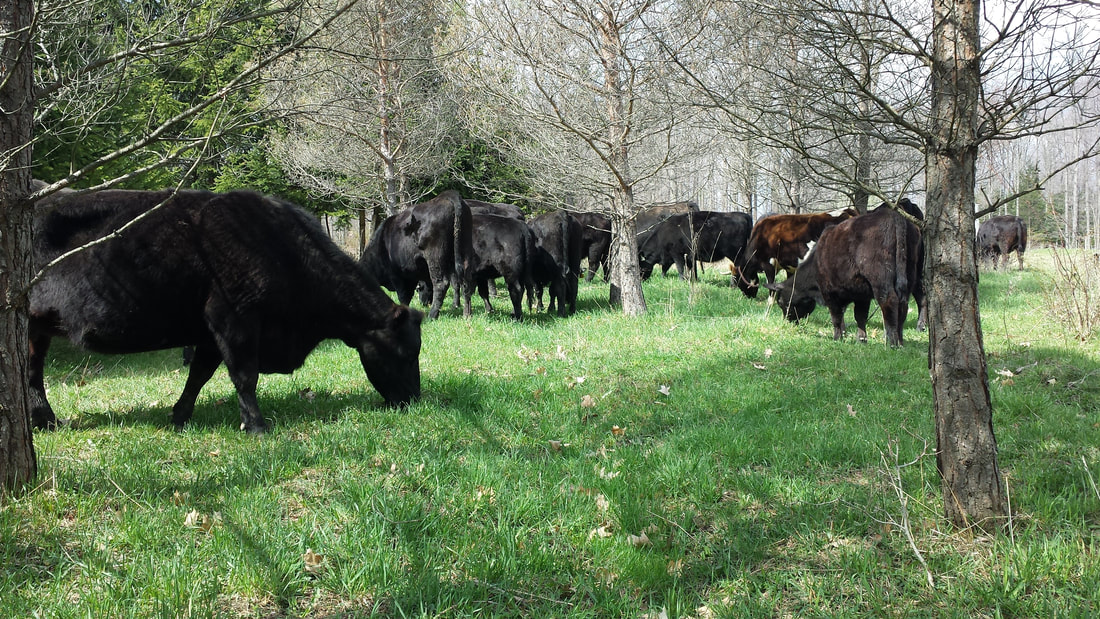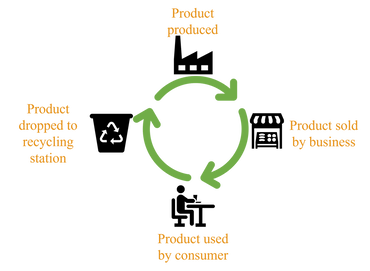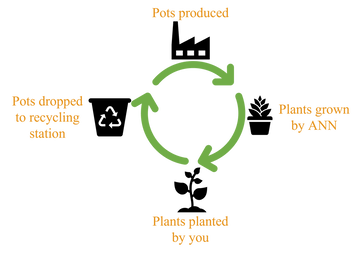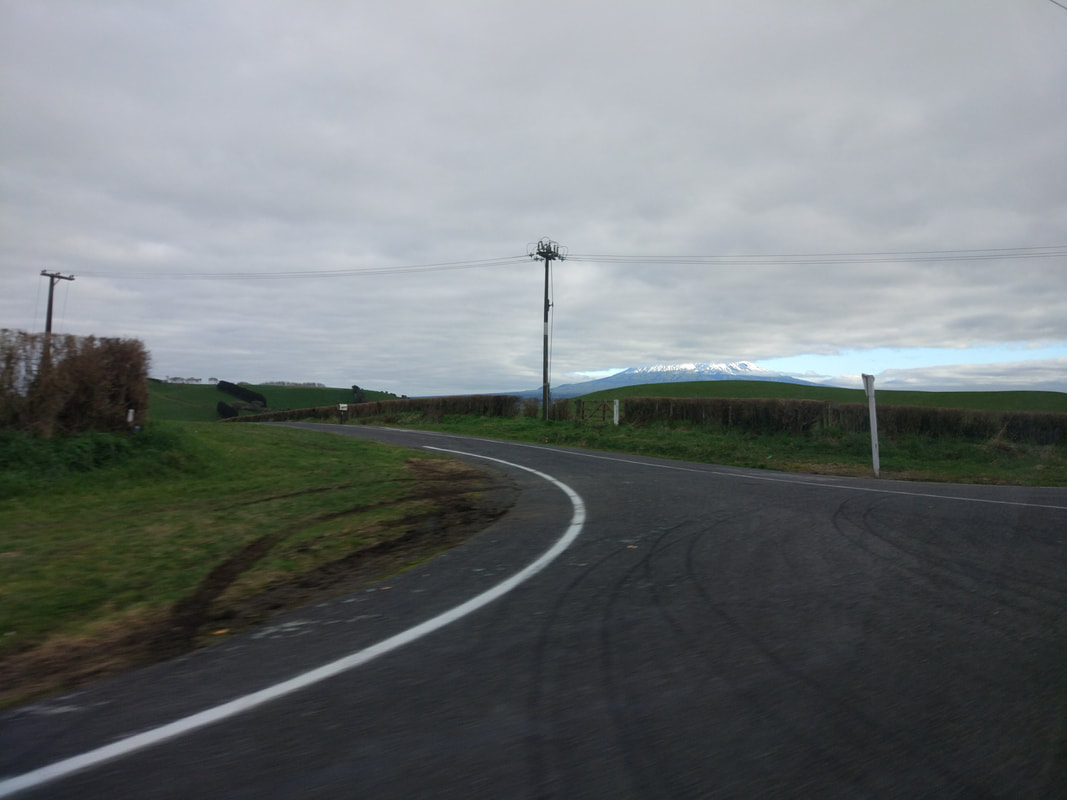|
Swan plants are most renowned for their vital role in providing habitat and food for the iconic Monarch butterfly. Monarchs lay their eggs on swan plants, and their caterpillars feed exclusively on the leaves of these plants during their larval stage. This special relationship makes swan plants a cornerstone of the Monarch butterfly's life cycle. By cultivating swan plants in your garden, you're actively contributing to the conservation of this beloved species. But this isn't the only role swan plants play in your garden. These lovely plants have a unique role in supporting local ecosystems and enhancing the natural beauty of your outdoor space. In this article, we'll explore the many reasons why swan plants are not only aesthetically pleasing but also ecologically significant. One of the most prominent benefits of swan plants is their role as a nectar source for a wide range of pollinators. While their vibrant, showy flowers are a treat for the eyes, they are equally enticing to bees, butterflies, and other beneficial insects. These pollinators rely on swan plants for nourishment, helping to support healthy populations and diversity within your garden, in turn resulting in a reduction in pesky critters such as aphids, whitefly's, and thrips. Swan plants also play a significant role in promoting biodiversity within your garden. By attracting various pollinators and providing a haven for butterflies, you create a more balanced and resilient ecosystem. The presence of swan plants can lead to an increase in the overall diversity of flora and fauna, leading to a healthier and more vibrant garden.
In addition to their various ecological and environmental benefits swan plants offer unique educational opportunities for both adults and children. Observing the complete lifecycle of butterflies, from eggs and caterpillars to chrysalises and adult butterflies, is a fascinating and educational experience. It provides insight into the interconnectedness of nature and the importance of preserving habitats for these delicate creatures. Swan plants can serve as a living classroom, fostering a deeper appreciation for the natural world. And as if that wasn't enough swan plants also add a touch of ornamental beauty to your garden. Their bright and cheerful flowers come in various colors, including shades of red, orange, and yellow, making them an attractive focal point in any garden design. Whether they are grown in borders, containers, or as part of a wildlife-friendly section, swan plants enhance the overall aesthetics of your outdoor space.
0 Comments
As Labor Day weekend approaches in Wellington, gardeners have a unique opportunity to celebrate the arrival of spring and get a head start on the growing season. Here are some gardening activities to make the most of your long weekend and embrace the beauty of the Wellington spring.
1. Sow Spring Vegetables and Flowers: A Fresh Start Labor Day weekend marks the beginning of Spring, and it's the perfect time to sow seeds for Spring and Summer crops. Consider planting vegetables like tomatoes, peppers, zucchini, and herbs. For vibrant garden beds, sow seeds of colorful annual flowers like marigolds, petunias, and cosmos. 2. Prepare Garden Beds: Set the Stage for Growth Before planting your Spring crops and flowers, it's important to prepare your garden beds. Start by weeding, loosening the soil, and adding organic compost to ensure your plants have the best foundation for healthy growth. 3. Pruning and Maintenance: Nurturing Your Existing Garden Take this opportunity to prune back any overgrown shrubs and trees in your garden. Spring is also an ideal time to feed your existing plants with a balanced fertilizer or compost to encourage new growth and vibrant foliage. 4. Pest and Disease Prevention: Start Early With the arrival of spring, it's essential to be proactive in preventing pests and diseases in your garden. Check your plants for any signs of trouble and apply appropriate treatments or protective measures. A healthy garden begins with early vigilance. 5. Garden Planning: Layout and Design If you have any garden design or layout changes in mind, Labor Day weekend provides an excellent opportunity to start planning. Sketch out your ideas, select new plants, and create a vision for your garden's transformation. 6. Relax and Enjoy: Reconnect with Nature While laboring in your garden, don't forget to take a moment to simply enjoy the beauty of nature. Sit back, relax, and appreciate the vibrant blossoms, the gentle breeze, and the promise of a new growing season. Labor Day weekend is the perfect time to usher in Spring, set your garden up for success, and reconnect with the outdoors. Embrace these gardening activities to make the most of the long weekend and create a flourishing and colorful garden in the coming months. Grey is the new BlackBlack plastic pots are a ubiquitous feature across garden centres and nurseries worldwide. Providing a convenient and cheap means of growing and transporting plants, they have been in use throughout the world for the last 100 years. Despite being cheap and convenient for the user, they are anything but for the environment. Plastic waste continues to build up in the oceans, rivers, and lakes the world over, and is now beginning to show up in the food and drink we consume every day. In an effort to reduce the amount of waste, various industries are attempting to ‘close the loop’ producing recyclable products from recycled materials. At Aston Norwood Nursery we aim to utilise materials and products that can achieve this goal. However, the staple of our industry, black plastic pots, have proved difficult to deal with. Until now the best solution we have found is to ask customers to return their re-used pots to the nursery, an initiative that has found mixed success and, unfortunately, does nothing to deal with broken pots. Now, however, there is a product that can fully ‘close the loop’. Modiform battleship grey pots are made from 100% recycled materials and are 100% recyclable. Made from no.5 polypropylene (pp) plastic, they can be recycled into useful products, completely closing the loop on their production. The key difference between these and previous pots is their colour. Black pots are not detectable by the Near-Infrared (NIR) scanners used to sort different plastic materials from one another. Grey pots, however, can be seen by NIR allowing them to be sorted using conventional and common recycling technology. The other feature of pots making them hard to recycle is that they are made of no. 5 plastic. Despite this plastic being extremely useful for a range of products including containers for liquids, liners, and furniture, number 5 plastic is not commonly collected for recycling at local recycling centres. However, Upper Hutt City Council has recently remedied this with the inclusion of number 5 plastic at the Upper Hutt Recycling Centre. Therefore, rather than having to return your pots to us (though we will still be actively re-using old pots) you can simply drop your pots to the recycling station with your other recyclable goods. From filtering air and water to providing aesthetic pleasure, growing plants has a suite of positive impacts. However, there are also a number of negative impacts that the production of plants can have on the environment. Recent advances in pot technology and recycling services allow us to ‘close the loop’ and remove one of these negative impacts. But we're not finished yet….
It’s time for the Great Kererū Count 2021. Whether you are inside your bubble, or just out of it, make sure you count all the Kererū you see between 17 and 26 September.
This is the last year of the Great Kererū Count. After this there will be eight years of data which will provide a scientifically robust understanding of trends, and on how best to help kererū. Tony Stoddard of Kererū Discovery, who coordinates the Count, says that community participation over the last seven years has been a privilege to be part of. Stoddard, who is a passionate advocate for kererū, encourages everyone to take part in the final count down. “Over the last seven years there has been a total of 52,034 observations, and 119,910 kererū counted. For this final count, it’s important that as many people as possible join in. It’s super easy, good for you, and good for kererū.” Kererū only live in Aotearoa New Zealand, are protected birds, and tāonga to many. Once there were large flocks of kererū, and now they are mostly seen singly or in small numbers perching on trees or overhead wires. Kererū are critical in keeping native forests growing because they are the only way that seeds of large native trees like tawa, taraire, hinau and miro are dispersed. Dr Stephen Hartley, Director of the Centre for Biodiversity & Restoration Ecology at Victoria University of Wellington, says that last year there was a 50% increase in sightings from 2019. “Despite this, there is a worrying recent report from the NZ Bird Atlas that numbers may be declining in the South Island. The Great Kererū Count is about New Zealand working together as community scientists to gain a better understanding of kererū so we can help them thrive. Whether you see any kererū or not, sharing observations is helping us get a great picture of where kererū live, their abundance, and most importantly how best to protect them. From the data we already have, we know that some of the best ways people can help kererū in their community is by planting trees like kowhai which is the most common tree people have seen kererū feeding on.” Dr Hartley also expects to see the importance of pest control for boosting kererū numbers. Kererū lay a single egg which is very vulnerable to being eaten by rats, possums and stoats. Although this is the last year of the Great Kererū Count, Kererū Discovery will continue so that people can keep sharing their stories and encounters and continue to build a shared understanding of kererū. Analysis of the eight years of data will be completed by Sam Rammell a post-graduate student at Victoria University of Wellington. The Great Kererū Count is a collaborative project led by Urban Wildlife Trust & Kererū Discovery together with partners Wellington City Council, Dunedin City Council/City Sanctuary, Nelson City Council and Victoria University of Wellington. The Great Kererū CountGreat Kererū Count observations are easy on the Great Kererū Count website www.greatkererucount.nz. Simply use the quick observation page (no log-in required). For more expert community scientists, the iNaturalist app for Android and iPhones can be downloaded for free from www.greatkererucount.nz. For 10 days for the last eight years, thousands of New Zealander’s make observations about the presence or absence of kererū, their location and their behaviour. This data is collected and collated by i-Naturalist NZ and data analysis is carried out by Dr Stephen Hartley and Dr Jon Sullivan, scientists from Victoria University and Lincoln University. This year will see the completion of this nationally significant data set, from which we will build a better understanding of what conditions help kererū survive and thrive. A few emerging trends so far are:
Kererū are also known as kūkū / kūkupa/ kokopa / New Zealand pigeon (Hemiphaga novaeseelandiae) and the parea / Chatham Islands pigeon (Hemiphaga chathamensis). Kererū play a crucial role in dispersing seeds of large native trees like tawa, taraire, miro and hinau. They are the only bird left in New Zealand that can distribute these large seeds and help keep native forests growing. Kererū are protected birds and endemic to New Zealand. Kererū numbers today remain much lower than the flocks reported from 50-100 years ago. The main threat to kererū is predation by introduced mammalian predators, particularly feral cats, possums, stoats, and rats. Other threats include collisions with man-made objects such as fast-moving vehicles, overhead wires, fences and windows, and illegal hunting of kererū. Reports of previous years’ data Download the Great Kererū Count 2020 Report Interactive story maps of the GKC https://arcg.is/059OeG0 Kererū Discovery Twitter: https://twitter.com/KereruDiscovery #GKC2021 | @kererudiscovery Kererū Discovery Instagram: https://www.instagram.com/kererudiscovery/ On a whirlwind tour of New Zealand’s Botanical Gardens, you’ll be inspired and awed. You’ll find curious plant collections, stunning landscape design, peaceful spots to unwind, often with sustainability top of mind. Throughout New Zealand, botanical gardens are unique to their regions and to the creative minds behind them – from the lush New Zealand natives of Zealandia to the international time-travel of Hamilton Gardens to the historic Wellington Botanical Gardens. Here at Aston Norwood, we know our gardens, and we’ve put together a list of the must-see botanical gardens of New Zealand.
Wellington Botanical Gardens The well-established Wellington Botanical Gardens (since way back in 1868) are smack bang in the middle of Wellington – 25 hectares of botanical collections, all on a slope that gives you impressive views of Wellington City and the harbour. Right above the CBD, you’re close to shopping areas and parliament. The cable car will take you from Lambton Quay up to the top of the gardens, and you can walk back down through the gardens. The gardens include protected native forest has a vibe of being a million miles away from the city, huge conifers, many dazzling flower beds, the Lady Norwood rose garden with 106 formal rose beds, the tropical Begonia House, and the Discovery Garden for children (which has lots of great learning about the uses of plants, from medicine to food, fibre and construction). And of course, it has a fantastic duck pond. Zealandia Zealandia is an incredible example of what is possible for New Zealand flora and fauna when introduced predators are removed: we’re all very familiar with the success stories of the kaka, kiwi, tieke, tuatara and other animals thriving in this fully-fenced urban sanctuary in Wellington, but the flora sustaining them all is incredible. Mamaku and ponga tree ferns tower, clematis climbs, kiekie and harakeke rustle, kawakawa clusters, and supplejack sprawls. The kowhai trees thrive, with their new growth able to flourish without browsers like possums and rabbits. The largest fuchsia species in the world, Kotukutuku/tree fuchsia grows tall on quickly without possums that can destroy whole trees elsewhere, and you’ll see the kotukutuku hollows used as nests by kaka and kakariki. Recently, the extremely rare, endemic parasitic plant Pua o te Reinga (Dactylanthus taylorii) was planted at Zealandia, with seeds from Pureora Forest Park. Zealandia is a jungle that makes up one of the lushest collections of New Zealand native plants you’ll find in the country. Auckland Botanic Gardens The Auckland Botanic Gardens are 64 hectares of gently contoured amazingness conveniently on the major arterial route of State Highway 1. They hold unique gardens, landscapes and 10 hectares of native forest. The plants are from northern New Zealand as well as from all around the world (some that are threatened, and enough diversity that there is something in flower all year round). Scattered throughout you’ll find incredible sculpture by New Zealand artists – with more being added regularly. These gardens are very child-friendly – children and parents will love the Potter Children’s Garden: it showcases the amazing ways plants adapt all over the world, with a replica desert garden, jungle, meadow and bog, it introduces sustainable rainwater collection and growing green roofs, and they can explore connections in nature such as the special relationship between the kereru and the puriri. Other gardens include the Gondwana Arboretum chocka with ancient spiky curiosities, an African Plants Garden, the Spring Blossom Valley and many many more. There is also a lovely café and an events centre. Christchurch Botanic Gardens A survivor of the Christchurch earthquakes, the Christchurch Botanic Gardens are 21 hectares of incredible gardens right in the middle of the city, next to Hagley Park and within easy walking distance of the CBD and hotels etc. Because they were established so long ago (1863), the Christchurch Botanic Gardens are absolutely filled with mature trees and historic features such as the 1926 Bandsmen’s Memorial Rotunda. The Avon River flows right through the park: any garden with its own river is amazing in our books. Look online for the seasonal highlights https://ccc.govt.nz/parks-and-gardens/christchurch-botanic-gardens/attractions/seasonal-highlights/ – whether you’ll be seeing the golden autumn ginkgos or the roses and azaleas in full bloom. Hamilton Gardens On the banks of the Waikato River, the publicly owned Hamilton Gardens are world class. Since the 1960s the area has been converted from a rubbish dump to a magical, award-winning garden that has become the Waikato’s most visited tourist attraction. Rather than having plant collections, the 54 hectares of planted land tells stories of gardening through the ages, the connection between people and plants: you can explore a Chinese Sung dynasty garden, then hop across to one from the Italian Renaissance, or the Indian Char Bagh Garden, or into a surreal fantasy garden with seriously imaginative topiary. Great any time of the year. Aston Norwood Here at Aston Norwood Gardens we are located in the beautiful countryside on the State Highway between Wellington and Hawke’s Bay, just 10 minutes north of Upper Hutt. Planted 25 years ago, our trees have just matured, including our 300 gorgeous cherry trees. These trees burst into blossom in spring, drawing visitors far and wide to walk under the pink blossoms in a very Japan-like experience (in fact, during this time our café serves Japanese foods and drink to add to the Sakura/cherry theme). The Rimutaka Stream winds through the gardens, crossed by some of our picturesque bridges, and throughout the rambling 5 hectares you’ll come across leafy avenues, wide open spaces, a maze, two gorgeous ponds (complete with ducks and eels) and a waterfall – and so much more. The garden centre is a great finale to the experience. We hope you manage to tick some of these incredible gardens off your list, and we look forward to hosting you here at Aston Norwood.  Cattle in a Silvopasture grazing system (13) Cattle in a Silvopasture grazing system (13) Current intensive livestock grazing practices have a significant negative effect on vegetation growth and diversity in various ecosystems throughout the world (1). Heavy grazing leads to a consistent decrease in the alpha diversity of plant groups; the number of distinct species in an area (2). Decreasing plant diversity contributes to the unprecedented loss of biodiversity we are currently seeing throughout the world, a significant issue encompassed by UN sustainability goal 15; Life on land (3). Intensive livestock grazing plays a key role in the degradation of fertile land, affecting the food security and ecosystem services of one billion people worldwide (4). Additionally, intensive livestock grazing releases stored soil carbon as carbon dioxide (5). Animal products provide all the essential amino acids as well as a dense store of proteins and fat required for human health (6). One billon people around the world rely on animal products for their survival (7). How do we balance these nutritional benefits and the demand they create with the undeniable impact livestock have on our planet? Regenerative agriculture may be the solution. Regenerative agriculture is described as “farming and grazing practices that….reverse…. reverse climate change by rebuilding soil organic matter and restoring degraded soil biodiversity…” (8). These practices have three main effects: Sequestering carbon from the atmosphere and locking it within the soil (8). Increasing the water storage capacity and percolation properties of soil which results in healthier and more sustainable groundwater catchments (8). Increasing biodiversity in the soil and on the surface (8). Central to the concept of regenerative agriculture are the processes of silvopasture, holistic planned grazing, and agroecology (8). These processes integrate grazing livestock with biodiverse landscapes comprising both trees and managed grasslands, mimicking how grazing herds used to migrate across major grasslands such as the American mid-west and the South African veld (9). Combining animals and crop systems may sound like a recipe for disaster, however, it has an excellent ecological basis following the hypothesis of intermediate disturbance. This states that achieving the highest levels of biodiversity in an ecosystem requires an intermediate intensity disturbance at an intermediate frequency for an intermediate period of time (10). This means that an ecosystem will function best when there is enough disturbance to create opportunities for new growth and the filling of niches, but not so much disturbance that the ecosystem is stripped of its life completely. In the South African veld this is achieved through maintaining dense herds of cattle that are moving constantly, mimicking the migration of large grazing herds in the area, thus maintaining the ecosystem (9). Here in New Zealand, where almost 50% of our emissions come from the agricultural sector (11), regenerative agriculture may provide the solution we have been looking for. Already a movement has begun lead by Mangarara station in the Hawkes Bay who have turned their farm into a biodiverse landscape whilst still running sheep, cattle and poultry (12). If we can learn from nature and follow the example set by places such as Mangarara station then the future of New Zealand’s, and the World’s, food security and ecosystem integrity can be secured. References 1. Impacts of livestock grazing on plant species composition in montane forests on the northern slope of Mt. Kilimanjaro, Tanzania. Kikoti, Imani A. and Mligo, Cosmas. 2, s.l. : International journal of biodiversity science, ecosystem services and management, 2015, Vol. 11, pp. 114-127. 2. The impact of livestock grazing on plant diversity: An analysis across dryland ecosystems and scales in southern Africa. Hanke, Wiebke, et al. 5, s.l. : Ecological applications, 2014, Vol. 24, pp. 1188-1203. 3. United Nations. Biodiversity. Sustainable development goals. [Online] [Cited: 03 09, 2020.] https://www.un.org/sustainabledevelopment/biodiversity/. 4. —. E Infographic 15. Sustainable development goals. [Online] [Cited: 03 09, 2020.] https://www.un.org/sustainabledevelopment/wp-content/uploads/2019/07/E_Infographic_15.pdf. 5. Rosales, Mauricio and Livinets, Svetlana. Grazing and land degradation in CIS countries and Mongolia. Viale delle Terme di Caracalla : Food and agriculture organisation. 6. Beyond milk, meat, and eggs: Role of livestock in food and nutrition security. Smith, Jimmy, et al. 1, s.l. : Animal Frontiers, 2013, Vol. 3, pp. 6-13. 7. Regeneration International. Holistic planned grazing. Regeneratio International. [Online] [Cited: 03 10, 2020.] https://regenerationinternational.org/tag/holistic-planned-grazing/. 8. Regeneration International. Why regenerative agriculture. Regeneration International. [Online] [Cited: 03 10, 2020.] http://2igmzc48tf4q88z3o24qjfl8.wpengine.netdna-cdn.com/wp-content/uploads/2017/02/Regen-Ag-Definition-2.23.17-1.pdf. 9. Mckenzie, David and Swails, Brent. Put down that veggie burger. These farmers say their cows can solve the climate crisis. CNN. [Online] CNN. [Cited: 03 10, 2020.] https://edition.cnn.com/2020/03/06/africa/agriculture-regenerative-farming-climate-crisis-intl/index.html. 10. Biodiversity and disturbance. Willig, M R and Presley, S J. 1, s.l. : Encyclopedia of the anthropocene, 2018, Vol. 3, pp. 45-51. 11. Ministry for the Environment. Environment Aotearoa 2019. s.l. : Ministry for the Environment, 2019. p. 94. 12. Hart, Greg and Hart, Rachel. Mangarara station - home. Mangarara station. [Online] [Cited: 03 11, 2020.] https://www.mangarara.co.nz/. 13. Smallidge, Peter. Silvopasture development: Trees into pasture. CornellForestConnect. [Online] [Cited: 03 15, 2020.] http://cornellforestconnect.ning.com/profiles/blogs/silvopasture-development-trees-into-pasture. Two Brothers and a Cousin fresh off walking the Camino de Santiago were searching for their next steps in life. After being in the wilderness for over a month, there was a certain level of excitement when presented with a business proposition involving nature and giving back to the environment. It was also a great time to give this a go as Oderings had just closed down leaving only Mitre 10 Mega as the sole plant provider within Upper Hutt. With a quick visit to inspect the potential produce that we would buy we were blown away with their quality. leveraging off the old mans years of experience we were convinced this would work. Let the first of many road trips commence... Once we arrived at our destination we got straight to work bundling and trimming our first bunch of maples and magnolias and packing them onto the back of a trailer... We quickly realised this would not be completed in a single day and after getting home at 2 am, healing in the plants till 3 am, we were back off on another road trip at 5:30 am to get the second lot of trees.... The following months were spent bagging up roughly 2000 trees and building the first of our irrigation lines. It was during this part of the process that we realised just how much plastic is used in the nursery/garden center industry. We wanted to change this as much as we could and since then this has been one of our main drivers.
|
Details
AuthorAs a local New Zealand family owned and operated business we are proud ensure D.I.Y is kept in our DNA as can be seen when walking through the Gardens, Nursery and Garden Center. Never ones to let a hard tasks pass us by we tackle them head on and learn as much as we can as fast as we can to try and create a positive change and encourage people to fall in love with the outdoors again. Archives
November 2023
Categories |
















 RSS Feed
RSS Feed